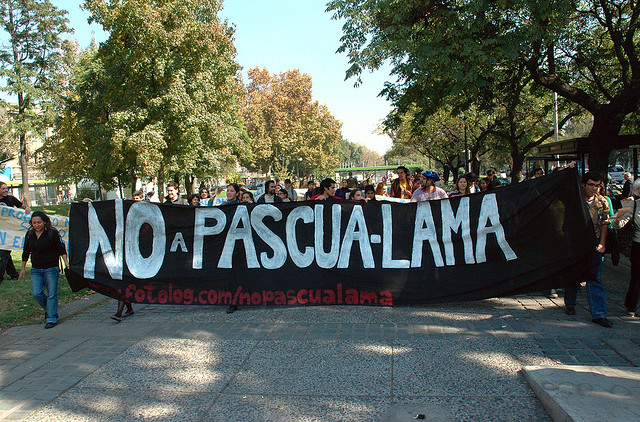Latin America Green News

 By Amanda Maxwell, La Onda Verde de NRDC
By Amanda Maxwell, La Onda Verde de NRDC
Chile
The Italian energy company Enel—which has a 51% stake in the beleaguered HidroAysén mega dam project through its subsidiary Endesa—will only remain committed to the 2,750 MW venture as long as it has the support of both local and national governments. In a conversation with the Wall Street Journal and Dow Jones, Fulvio Conti, the company’s CEO, stated that while Enel is looking to grow its investments in Latin America, without government direction and support for HidroAysén, the company will choose to move its capital elsewhere. Meanwhile, the project has publicly clashed with several mayors in the Aysén region over the last couple of weeks, demonstrating the increasingly strained relationship that its owners, Endesa and Colbún, maintain with the local communities. (Diario Financiero 4/9/2013; Dow Jones Business News 4/8/2013; El Ciudadano 4/10/2013)
“Geothermal energy is a renewable, local, and clean energy source that can be exploited from the country’s north to its south”, stated Diego Morata, director of the Andean Geothermal Center of Excellence (CEGA) during a seminar co-hosted by CEGA and NRDC last week. The event sought to tease out the barriers to geothermal development in Chile, a country with abundant stores of the resource but zero installed capacity. (Piensa en Geotermia 4/10/2013)
The use of non-conventional renewable energy in Chile grew by 23% over the last year, reaching 5% of total energy generation in 2012. Biomass constituted the largest portion—50%—of NCRE capacity in the country, followed by hydro (35%), wind (12%) and solar (.02%). By law, all energy supply contracts signed after August 2010 must include a 5% renewable energy target. The target is set to increase 0.5% per year until reaching 10% in 2024. Congress is currently debating new legislation to raise the target to 15% or 20% by 2020. (Tendencias 8/4/2013)
Saferay, a German solar energy developer, has applied for an environmental permit to build a 135 MW photovoltaic plant in Chile’s Atacama Desert. The Carrera Pinto plant will have about 561,000 solar panels and add approximately 240 GWh of electricity per year to the country’s central electricity grid, the SIC. Work on the plant is expected to begin in September. (Bloomberg 4/8/2013)
Barrick Gold Corporation—a Toronto-based mining company—has suspended construction work at its Pascua Lama mine after an appeals court in the northern city of Copiapó charged the company with “environmental irregularities” pertaining to the gold and silver mining project. Indigenous communities in the area have accused Barrick of contaminating their water supply and polluting nearby glaciers. The company is awaiting the completion of three reports commissioned by the Superintendence of the Environment, the region’s Health Service and the national Environmental Evaluation Service before determining next steps, which may include completion of another environmental evaluation and payment of compensation. (New York Times 4/10/2013; Diario Financiero 4/11/2013)
Costa Rica
The Blue Flag Ecological Program—created in 1995 to distinguish beaches that met strict water quality, hygiene, and sanitation standards—awarded the first “sustainable homes” prize to 19 Costa Rican households. The category, which was created in 2012, seeks to recognize actions that encourage water and energy efficiency, reduce the use of fossil fuels, and promote reforestation. A Blue Flag was also awarded to Isla del Coco, a first for the island, for its efforts to improve waste management. (La Nación 4/11/2013)
Industrias Infinito, a subsidiary of the Canadian mining company Infinito Gold, hasaccused the Costa Rican government of breaching a trade agreement between the two countries when it suspended a gold mining concession in Crucitas de San Carlos. The two sides have six months to settle the dispute, after which the case will go to the International Centre for Settlement of Investment Disputes. The conflict arises from a 2010 Decree establishing Costa Rica’s as a country free of open pit mining. (El Financiero 4/4/2013)
Mexico
In a petition submitted to the Commission for Environmental Cooperation—an international body created under NAFTA to promote collaboration between member states on environmental issues—eleven conservation groups (including NRDC) areasking for an investigation into government approval of the construction of four “mega resorts” in the Gulf of California. The petitioners are asserting the government ignored its own environmental laws and failed to protect sensitive marine and coastal ecosystems when approving the projects. (eNews Park Forest 4/11/2013)
Mexico’s House of Deputies has approved a 15-year energy strategy for the country, an initiative introduced by President Peña Nieto that passed the Senate last month. The strategy calls for modernization of Mexico’s transportation, energy storage and distribution infrastructure, strengthening of its petroleum refining capacity, and that advancement of clean and secure energy sources. (Yahoo! Noticias 4/9/2013)
Federal deputies met with representatives of the Mexican Association of Wind Energy on Monday to discuss potential actions to spur the development wind energy projects in the country. Among the various proposals, the deputies are backing the creation of the Mexican Institute for Renewable Energy, which is expected to help attract private investment to the sector. Mexico’s wind energy potential is estimated to be 12,000 MW. (Reve 4/8/2013)
This article was first published in NRDC Switchboard.
Amanda Maxwell is a born and bred Jersey girl, but has lived for varying amounts of time in Michigan, Vermont, Rhode Island, New York, and the Czech Republic before moving to Washington, DC. Prior to joining NRDC she received my Masters degree in International Politics and Economics with a focus in Renewable Energy policy from Charles University in Prague. While there, she gained an appreciation for night running, train travel (especially of the high speed variety), and the local pivo. She received a Bachelors degree in history and Spanish from Middlebury College, and also studied in Buenos Aires.
[Photo by antitezo]

